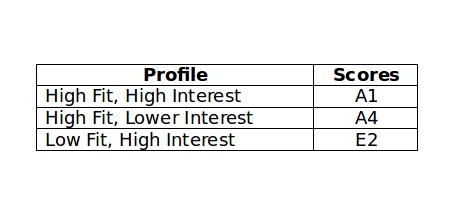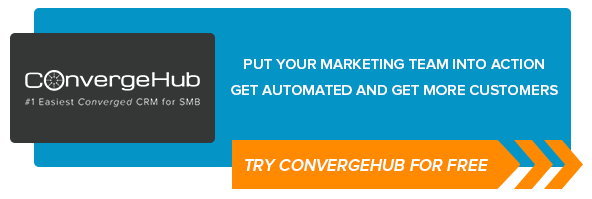
Best Online lead management software that can help any business. 6 Lead Scoring Techniques That You Should Use With Your CRM ConvergeHub. When most of us start implementing inbound marketing, the primary concern that worries most of us is finding enough leads in the sales funnel.
But then once that is over, and we have a lot of leads, what concerns us more is trying to figure out who are really interested in our products and services and who have just started to look around.
This is exactly where the Lead Scoring process comes into action.
Lead scoring is a process, which lets us assign a value or a certain number of points against each leads.
These points are based on professional information that we have received from the leads, which is measured by how they have engaged with our brands and websites across the internet.
Lead scoring helps the marketing and sales teams prioritize and increase the conversion efficiency of the leads.
Each organization employs a different model for assigning points to score their leads. However, the most tried and common way of calculating the lead scoring points is using Logical Regression Analysis for creating this value system.
Although it apparently seems very easy, your lead scoring process can quickly become complicated depending on your business model and the number of leads in your database.
So, let us guide you through the basics of creating a lead score and suggest what data you should look for and how you can find the most important attributes for creating a lead scoring spreadsheet.
Ask questions pertaining to the demography of the visitors in the forms on your website’s landing page. You can use the answers to see how well they fit with your target audience, whom you want to sell your products or services.
If you are selling only to a certain age or geographic location, with this information you can give a negative score to any lead that falls into a category where you don’t sell.
Similarly, you can also award an extra score if someone has provided optional information on your form field (e.g. phone number).
If you are trying to sell to a certain type, size or industry, you can also ask questions like these in your landing page.
For example, if you are more interested in selling in B2C or B2B organizations, you can give points to leads that fit with your target audience and take points away from who are not what you are looking for.
Looking at how a lead interacts with your website can provide you with many interesting facts about those leads that have already purchased your products or services. Take a look at their online interactions.
Find out which pages and how many pages they visited on your site before becoming your customer.
Comparing this data with your new leads may help you to provide a higher score to those leads who visited the high-value pages in your website (e.g. pricing page) or have filled out a high-value form (e.g. demo request).
Similarly, you can also provide a higher score for those leads who had 40 page views on your site, compared to who just visited 3 times.
We all know how leads often change their behavior over time.
So if a lead has stopped visiting your website or have paused downloading your offers, you can take away points from all the non-engaging leads while measuring your lead scoring statistics, after a certain period of time.
Email opening and click-through rates (CTR) often gives a better idea of the interest level of your leads.
You can give higher scores to the leads who seem most engaged with your products and services and have clicked through your high value emails (e.g. special/seasonal discount offers).
The amount of engagement a lead shows with your brand on social networking sites can also give you an idea as to how much interest the lead is generating for buying your products and services.
Find out how many times your leads have clicked through your company’s Tweets and Facebook posts and award them points according for perfecting your lead management tool.
Lastly, you can also provide a negative score to all those leads who have filled your landing page forms in an improper way, which may sometimes indicate that those leads are spams.
For example, if the company name, first name and the last name are not capitalized, you may assume that those leads are not serious. Else, you can also see which type of email addresses, your leads are using (is it a personal or a company email) and take away or add points to your leads.
You can also create an Attribution Report of your previous customers and see the conversion path that your existing customers took before they became your customer and set your predictive lead scoring numbers accordingly.
According to research done by Marketing Sherpa, it has been found that:
When any fresh lead is added to the database, an average of only 27% of these leads will eventually qualify to a point where they will be ready to interact with sales. The rest, 73% who have not reached there yet, have to be nurtured further.
The most common scoring system followed by most lead management software is:
 At times, many organizations also use Lead Grading techniques, which can be really useful ina B2B marketing setup.
At times, many organizations also use Lead Grading techniques, which can be really useful ina B2B marketing setup.
In the previously said lead scoring technique, we can learn only about the level of interest of the leads based on their types and number of interactions, but it will not tell anything about how fit a lead is for closing the deal.
To do this we need a separate letter based grading system, which is most commonly used by all lead scoring CRM platforms.
In other words Profile Fitness statistics of any leads are only used to increase their lead score.
For example, Level A which indicates a great fit, is provided to C-suit employees and owners of an organization who has more budgetary control, while Level E indicates people who use free version of the software and does not have enough financial power and budget for a paid subscription.
Here is a typical Profile Fitness table use by many B2B organizations:
 In this diagram, leads which falls in the category ‘A1’ can be demarcated for subsequent follow-up by the sales team, whereas ‘A4’ can be nurtured further by email and ‘E2’ does not warrant a call unless the lead interacts more.
In this diagram, leads which falls in the category ‘A1’ can be demarcated for subsequent follow-up by the sales team, whereas ‘A4’ can be nurtured further by email and ‘E2’ does not warrant a call unless the lead interacts more.
Every business as per their requirement and previous customer accusation experiences need to change the threshold scores for understanding when they will pass on a lead to their sales team as a marketing qualified lead.
So, if you find this article helpful and effective for your business, tell us about your thoughts in the comment box below.

